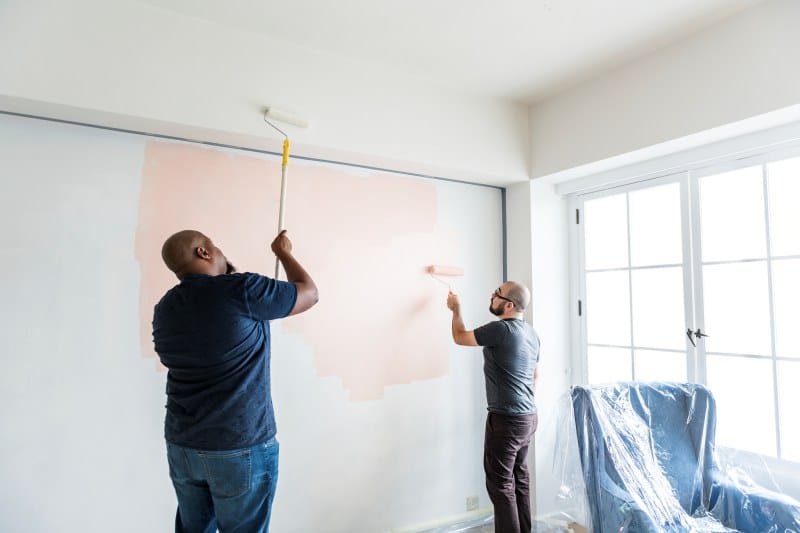Colors have a special way of affecting how we feel. They can lift our mood, make us feel calm, or even help us focus better. When you change the colors in your home, you do more than just change how it looks. You change how it feels.
If you want your home to feel better and look better, understanding how to use color is a great place to start. It can help you create a space where you feel your best every day. Read further to uncover helpful tips below.
Why Color Affects Mood and Emotions
Color has a big effect on our emotions. It can make us feel certain ways. Some colors are calming. Others can make us feel more awake or cheerful.
This is why picking the right color for a room matters so much. For example, blue is known to help people feel calm. That makes it a great choice for bedrooms or quiet reading areas.
Yellow is a bright and happy color that can help with focus and creativity. That’s why it often works well in kitchens or home offices. The way a room feels isn’t just about furniture or lighting. It’s also about color.
When you use the right colors in your home, you make each room more enjoyable to be in. You can feel more relaxed, more energized, or even more focused, just by changing a wall color or a set of curtains.
Picking the Best Colors for Each Room
There are so many options that it’s easy to feel unsure. A good way to start is by thinking about how you want each room to feel. Do you want it to feel calm and quiet, or full of energy and life?
Warm colors like red, orange, and yellow can make a room feel cozy and exciting. These colors are good for social spaces where people talk, laugh, and spend time together. Cool colors like green, blue, and purple bring a peaceful feeling. These work well in places where you want to rest or relax.
It also helps to look at how much natural light your rooms get. Rooms that get a lot of sunlight can handle cooler colors without feeling too cold. Rooms that are darker during the day may look better with warm shades that make them feel brighter.
Another thing to keep in mind is the furniture and items already in your home. Your couch, tables, and rugs all have colors that matter. Pick paint and fabric colors that match or go well with those things.
That way, your home will feel like everything belongs together. A professional painter can also offer helpful advice to make sure your color choices fit your space perfectly.
Adding Color Room by Room
You don’t have to change every wall or buy new furniture to make a difference. A few simple updates in each room can go a long way.
Living Room
In the living room, you might want a space that feels warm and welcoming. A mix of soft colors with some bold accents can work well here. For example, you can paint one wall a deeper color to create a focus point, while keeping the rest of the space light and open.
Kitchen
In the kitchen, cheerful colors like yellow or green can make the space feel fresh and full of energy. These colors can go on walls, but they can also appear on cabinets or backsplashes. Just a little bit of color can make your kitchen more fun and exciting.
Bedroom
The bedroom is a place where you want to feel calm and restful. Soft blues, greens, or light gray tones are great choices. Try using different shades of the same color on walls, bedding, and curtains to create a peaceful space that helps you unwind at the end of the day.
Bathroom
The bathroom is a fun place to try something new. Light and airy colors can make a small bathroom feel bigger. Blues, soft greens, or creamy whites can turn a basic bathroom into a spa-like retreat.
Using Texture to Make Colors Pop
Color doesn’t work alone. The way a color looks can change depending on the materials and textures around it. Adding texture to a space helps bring the colors to life and gives your room more personality.
If you have a bright color on the wall, a soft rug or a fuzzy blanket can balance it out. Shiny or smooth surfaces like glass and metal look great with darker colors. Natural materials like wood or woven baskets add warmth and look good with cooler shades.
Try mixing different textures in the same room. A leather chair, a wooden table, and a soft fabric throw can all work together to make your space feel richer and more inviting. Texture adds depth, and when paired with the right color, it creates a space that feels finished and comfortable.
Using Decor and Accessories to Add More Color
If you don’t want to paint or buy new furniture, you can still change the look of a room with small accessories. These items are easy to change and can quickly update how a space feels.
Artwork is a great way to add color. A painting or photo with the right shades can tie a room together. Throw pillows, blankets, and curtains are also easy ways to bring in more color and texture.
Adding plants is another great idea. Plants bring a fresh feeling to any space, and the green color works with almost any design. They also add a natural look that can balance bright or bold colors.
By using decor and accessories, you can keep your space feeling current without making big changes. This is perfect if you like to refresh your home often or enjoy decorating for each season.
Take the First Step Toward a Colorful Home
Your home should be a place where you feel happy, calm, and at ease. With the right colors, it can be all of that and more. Look at your current space and ask yourself how you want it to feel.
Then explore the many ways you can use color to bring that feeling to life. From painting a wall to adding a new pillow or plant, every small step brings you closer to a space that feels just right. Let color be your guide, and enjoy watching your home transform, one shade at a time.



